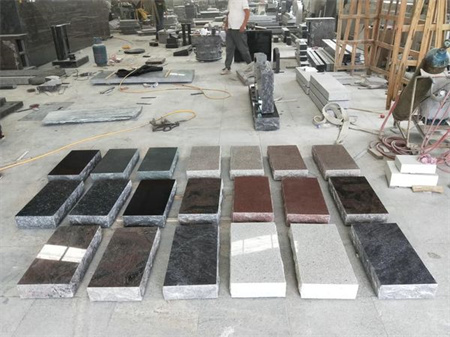How to Incorporate Granite Memorial Stones into Memorial Parks

Title: How to Incorporate Granite Memorial Stones into Memorial Parks
Granite memorial stones have long stood as symbols of permanence and respect. When integrating these enduring markers into memorial parks, several key considerations ensure that they complement the park’s overall aesthetic and functionality. This guide explores how to thoughtfully incorporate granite memorial stones into memorial parks, enhancing their role as meaningful spaces of reflection and tribute.
1. Understand the Space

2. Choose the Right Granite Type
Granite comes in a variety of colors and finishes, each with its unique characteristics. For memorial parks, selecting the right granite is essential. Classic options like Black, Gray, and Red granite are popular for their durability and timeless appeal. These stones withstand weathering while providing a dignified appearance. Ensure the chosen granite complements the park’s existing elements and contributes to its serene ambiance.
3. Design Considerations
Granite memorial stones should be designed to blend seamlessly with the park’s landscape. Work with skilled designers to create custom stones that reflect the park’s character and purpose. Considerations might include the shape, size, and engraving details. Personal touches such as inscriptions or decorative elements can make each stone a unique tribute while maintaining harmony with the park’s overall design.
4. Placement and Layout
Effective placement of granite memorial stones can enhance their impact and usability within the park. Strategically position the stones to create focal points or guide visitors through the park. Whether arranged in a circular pattern or along a pathway, thoughtful layout ensures that each memorial stone is visible and accessible, inviting reflection and remembrance.
5. Incorporate Surrounding Features
Granite memorial stones should not exist in isolation. Integrate them with surrounding features like benches, water elements, or landscaped gardens. These additions not only enhance the visual appeal but also create a cohesive environment that encourages visitors to pause and reflect. Incorporating natural elements such as plants and trees can further enhance the setting, making it a tranquil space for contemplation.
6. Maintenance and Durability
One of the ultimate advantages of granite memorial stones is their durability. However, regular maintenance is essential to preserve their appearance and integrity. Establish a maintenance plan to address any weathering or damage. Routine cleaning and inspections ensure that the stones remain a lasting tribute for years to come.
7. Collaborate with Suppliers
When sourcing granite memorial stones, working with reputable suppliers is crucial. Look for suppliers with experience in creating high-quality granite monuments and who understand the specific needs of memorial parks. Suppliers should provide a range of options and offer guidance on selecting and customizing stones. Consider partnerships with suppliers who can deliver on both quality and design.
8. Community Input
Incorporating community input can add significant value to the memorial park project. Engaging with local communities or stakeholders helps ensure that the granite memorial stones meet the expectations and needs of those who will use the park. This collaborative approach can lead to a more meaningful and well-received memorial space.
In conclusion, incorporating granite memorial stones into memorial parks involves a blend of thoughtful planning, design, and maintenance. By understanding the space, choosing the right granite, and carefully placing and integrating the stones, you can create a space that honors the past while providing a serene environment for reflection. Engaging with experienced suppliers and considering community input further enhances the park’s significance, making it a place of enduring tribute and tranquility.